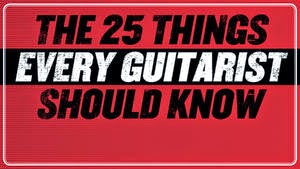Singing and playing guitar can be tricky for a beginner but it is not impossible. A sense of good timing, rhythm and ability to combine two actions at once will come with practice and dedication.
Method 1 of 6: Using a Metronome
1.Learn how to play guitar. You can start with basic chords, or find a song and look up the tabs. Find something you think you can sing to.
2.Learn the words of the song. Practice your singing technique.
3Learn how to play while tapping your pinky in 4/4 time. It would sound like 1 2 3 4 if you don't know how to count 4/4 time. A metronome can help you to keep time and is available inexpensively at most music stores.(There are also many online metronomes that are free)
Method 1 of 6: Using a Metronome
5.Once you feel comfortable enough with the rhythm, no longer count aloud, just tap along.
7.Its also very important to remember sometimes guitarists go months to years without keeping a steady tempo; using a metronome will help a lot.
Method 2 of 6: Playing Along with a Record
2.Play the song with the record and try to at least hum the lyrics.
3.Keep practicing the song until you can play it without the record and with your eyes closed.
- Your brain uses alpha waves and beta waves (conscious/sub-conscious). You use alpha waves when you concentrate and focus on something and use beta waves when you can just "do it" without "thinking about it". Once you have the song down to this point, you're ready for the final step.
4.Play the song, but DO NOT think about the chords, fingerings, or anything else; just play. Now sing the song and let the playing fall to the background. Your conscious will be concentrating on the singing, but your sub-conscious will be playing the song. This can feel a little like an out of body experience where half your brain is actually playing the guitar and the singer in you is using the other half. It's weird at first, but very exciting and fun once you got it down.
- Finally, you will be able, with practice, to change roles back and forth (did I hit that chord right? yes, OK the next vocal line goes like...).
- Note: it is quite rare for guitar solos and singing parts to occur at the same time (that is by design) don't try and change that when you go to write a song(easier on you anyway).
5.Well, practice this and have fun!
Method 3 of 6: Training Your Brain to Multitask
2.Practice these until you can play them easily.
5.Next, try reading something whilst playing (try reading off a computer screen if you can't hold a book open.) This will keep your mind more active than watching TV and playing.
6.Try reading out loud in a droning voice (A common problem is only being able to sing the notes you're playing)
7.Keep doing this and eventually you should be able to sing and play almost completely different things.
Method 4 of 6: Learning the Lyrics First
1.Pick a song you want to play,and learn the lyrics
2.Now play the recording of the song back to you and sing along. If you want, you may hum or sing in your head, just so that you can get the song in your head). Repeat until you have mastered the song and you can play the song back in your head.
3.Now pick up the guitar and play along with the recording, but only guitar.
4.Once you master the song and you can play it without looking, start humming, or singing out loud while playing.
Method 5 of 6: Associating Chords with Words
1.Try to play chords that go with each other, (ex. E, D, G).
2.Next, think of a word to use as your "sample word". Use a sample word for each of your chords.
3.Take for example, if my sample word for E were game, then I would play E but say game at the same time. If D was free, than I would play D at the same time as free was being said. Try to make your words rhyme, because it will train you to distinguish word from word when playing.
4.Use this method with an actual song. This method is useful because it trains you to give each word a note, and this eventually leads to word-guitar-sync.
Method 6 of 6: Playing While Reading
1.Once you are fine with playing the song just try playing while reading a book.
2.Practice until you are able to read the book. Once you are able to do this, read aloud in any particular rhythm of your choice.
3.Once you are able to do this, singing songs will be easy.
Source : http://www.wikihow.com












































